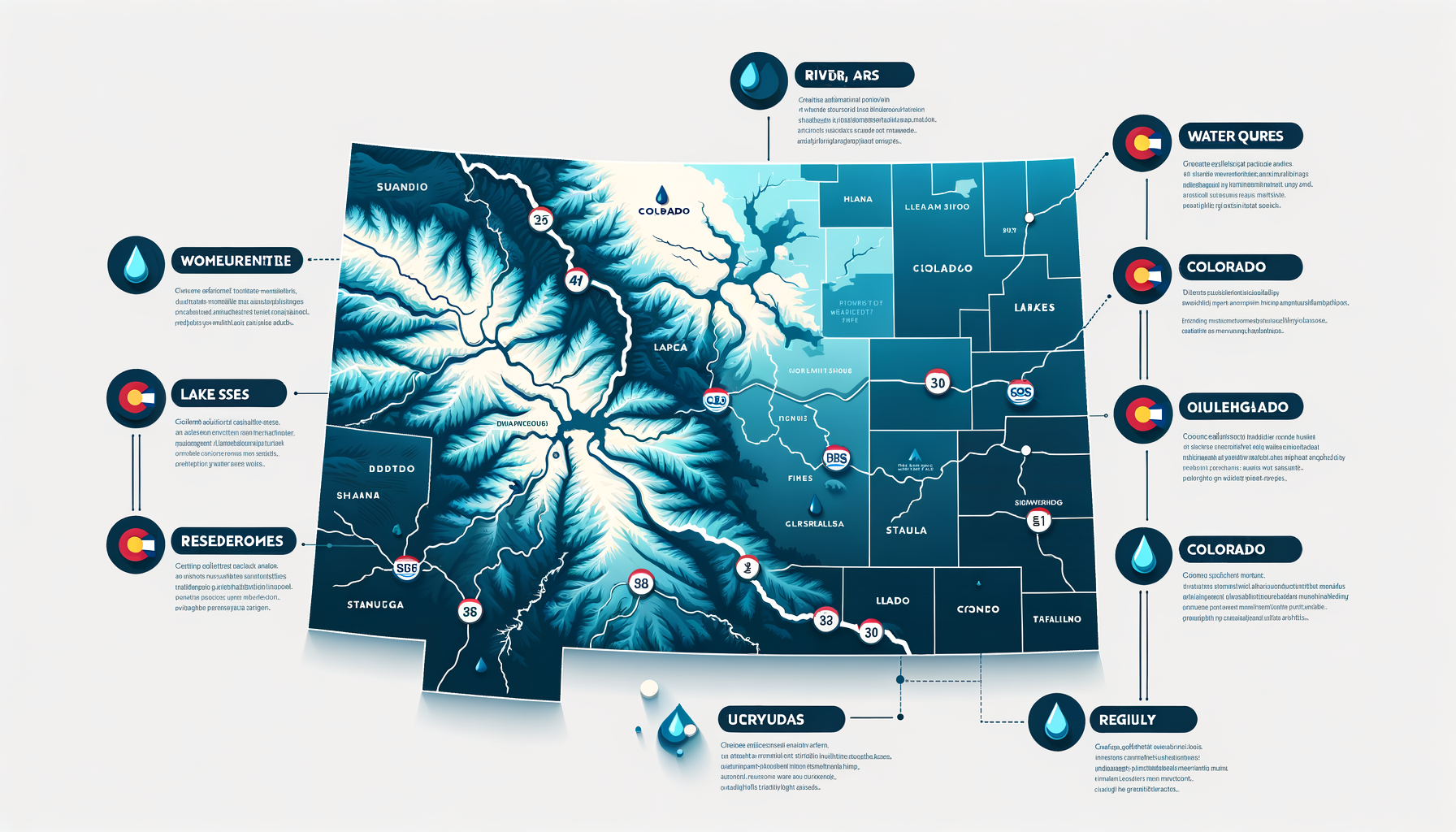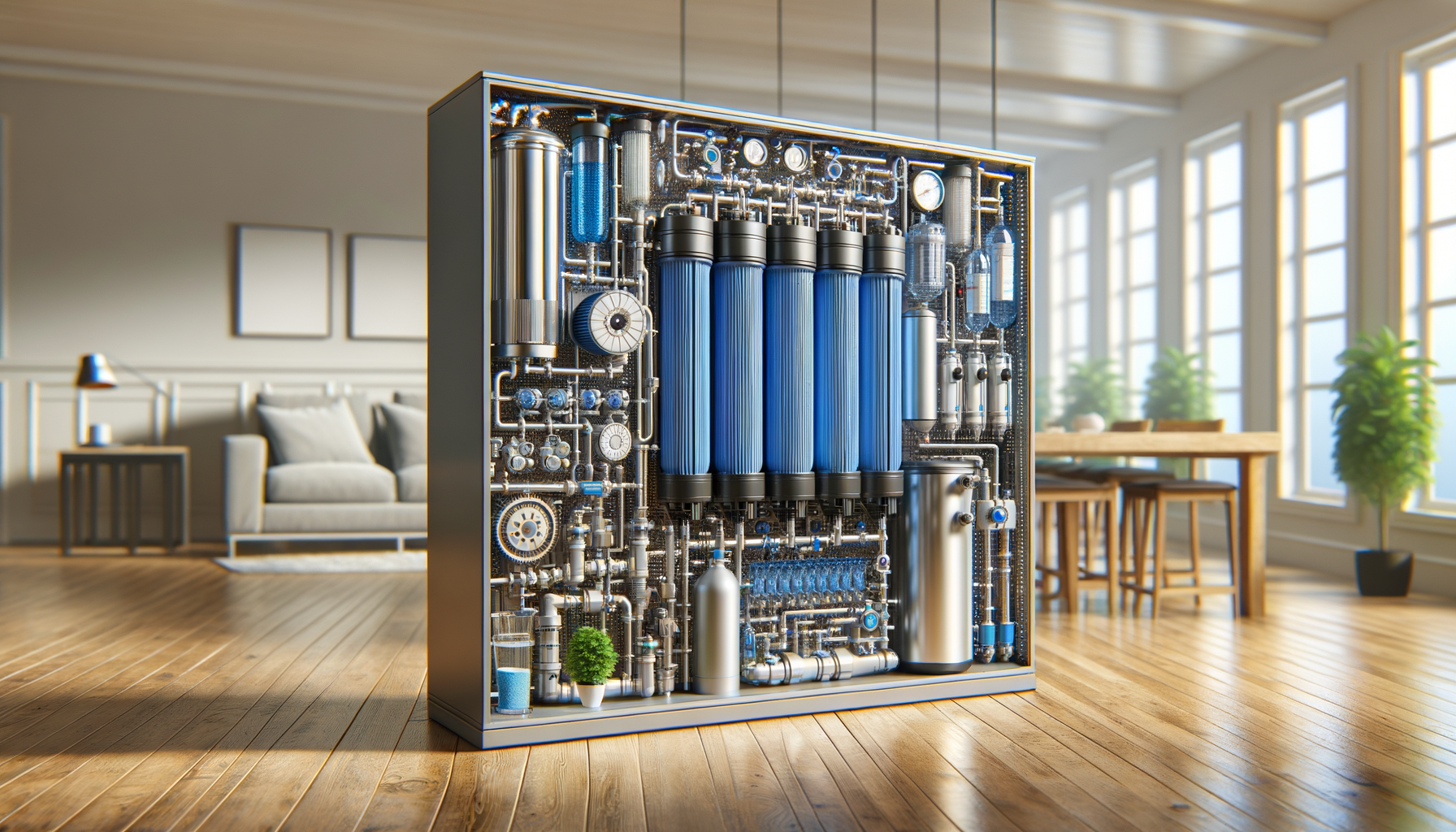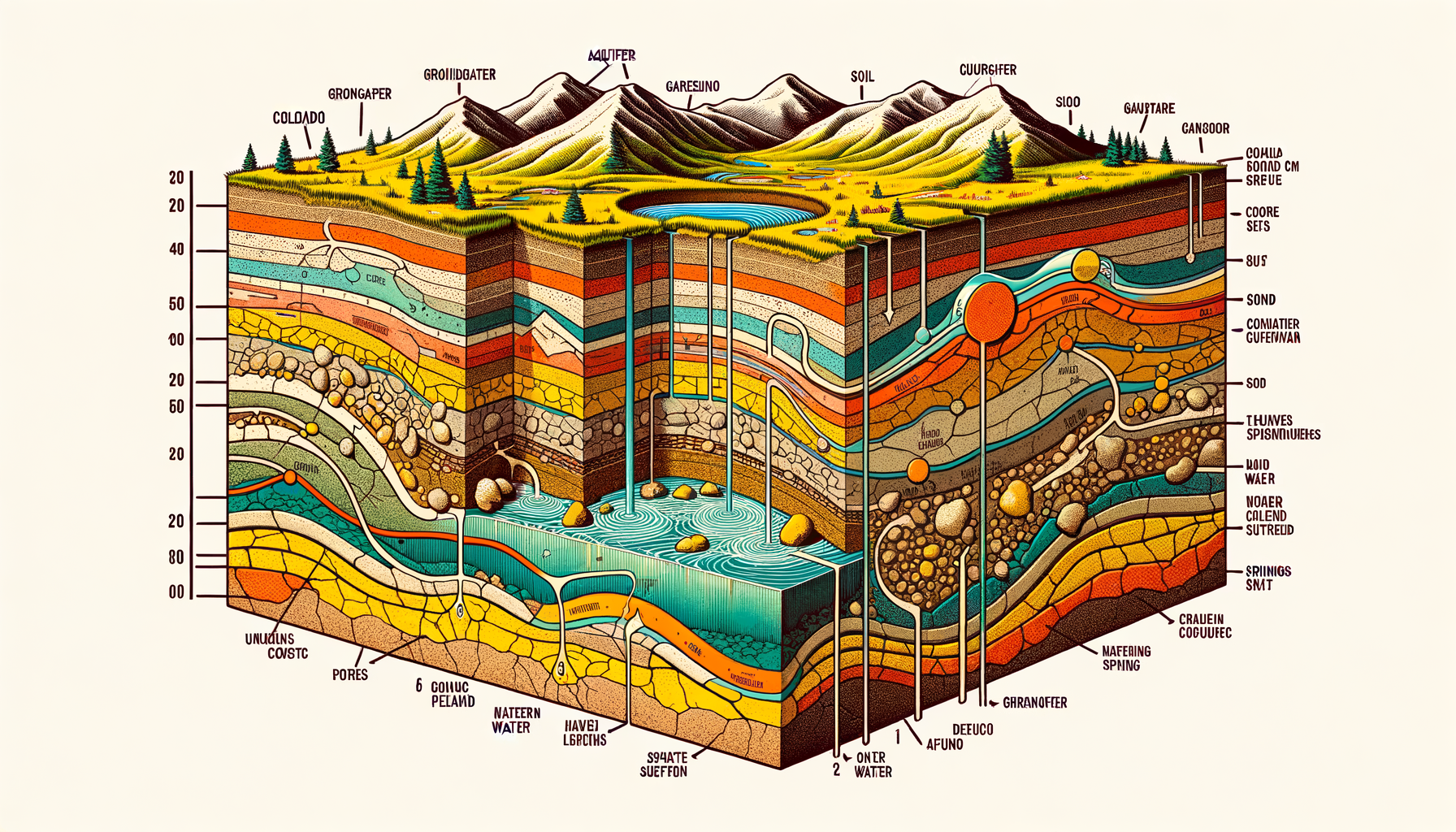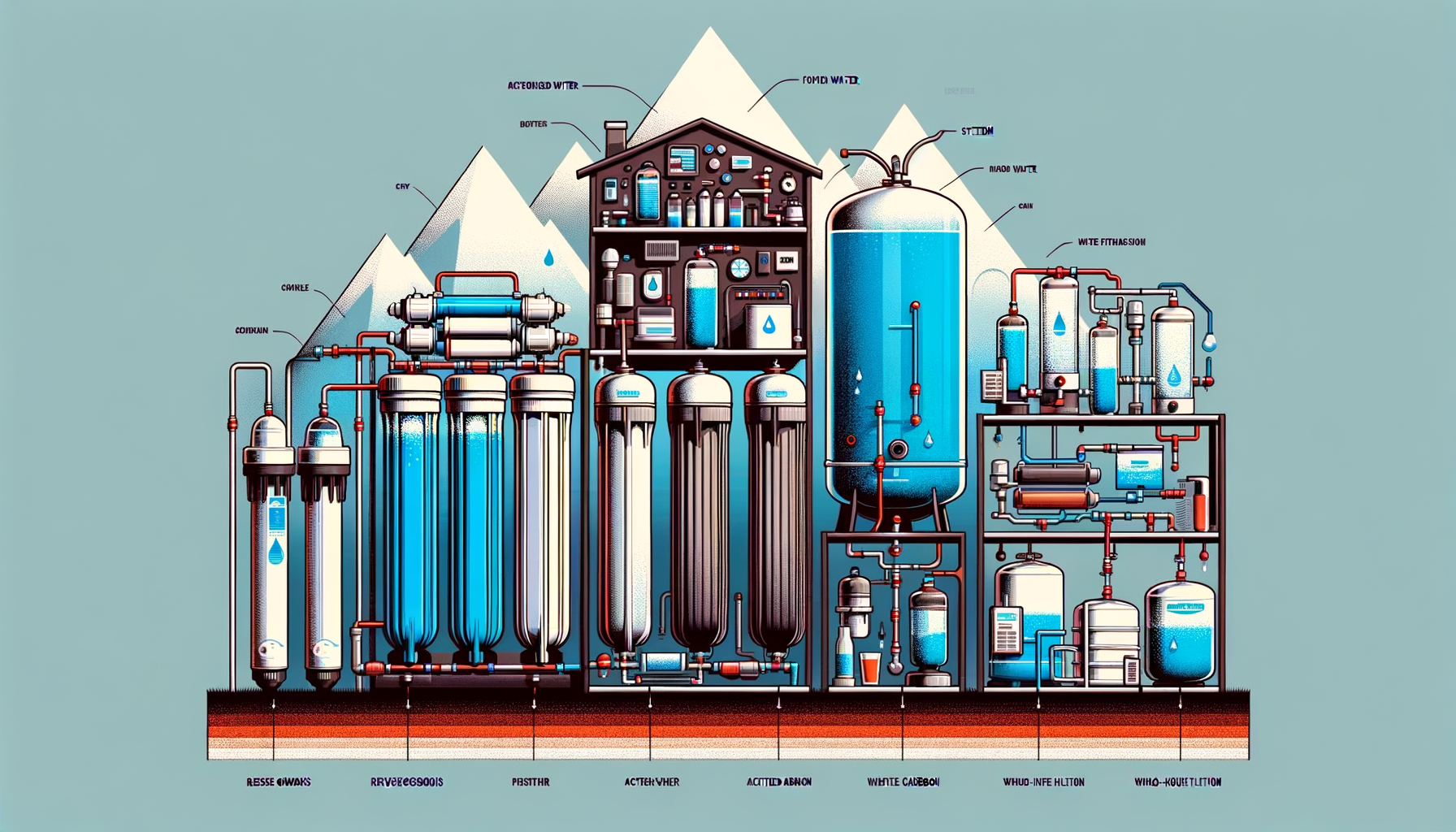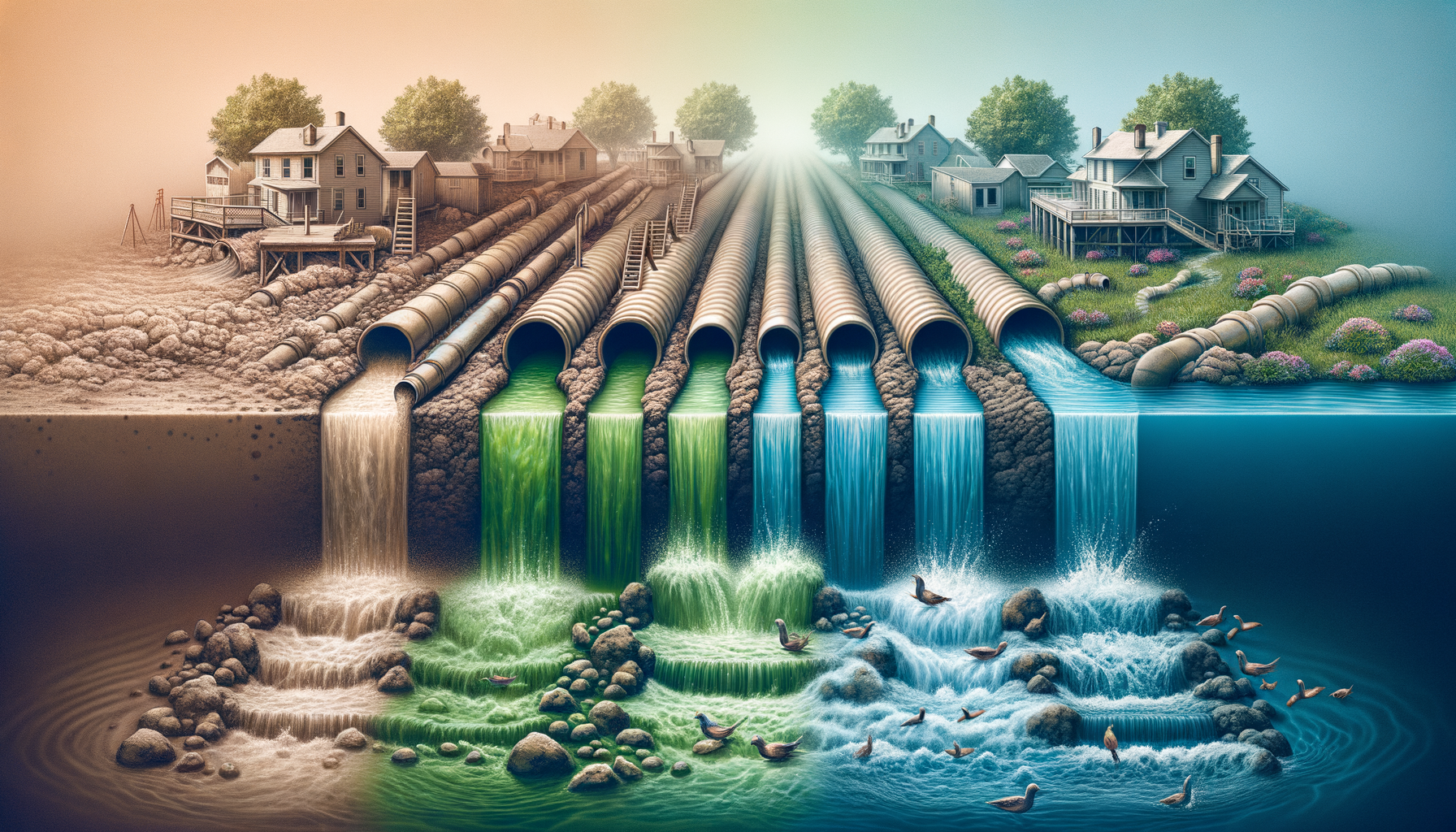Comprehensive Guide to Water Quality in Colorado State: Contaminants, Issues, and Water Filtration Solutions
by Ryan Moreau / updated February 13th, 2025
Colorado is renowned for its majestic mountains, pristine rivers, and vibrant cities like Denver and Boulder. The state’s unique geography and diverse ecosystems contribute to a complex water supply system that is both abundant and challenging to manage. In this comprehensive guide, we explore the common contaminants in Colorado’s water, regional water quality challenges, and effective filtration solutions. Start by using our Water Quality Tool to get a customized analysis of your local water conditions.
Overview of Colorado’s Water Sources
Colorado’s water supply is intricately tied to its geography and climate. Key sources include:
- Snowmelt from the Rocky Mountains: The majority of Colorado’s surface water originates from snowpack in the Rockies, feeding rivers and reservoirs used for municipal, agricultural, and recreational purposes.
- Major Rivers: Rivers such as the Colorado River, Arkansas River, and South Platte River are critical for supplying water to both in-state communities and downstream states.
- Groundwater Aquifers: In eastern Colorado, the Ogallala Aquifer provides groundwater resources for rural communities and irrigation.
- Reservoirs and Lakes: Man-made reservoirs like Lake Dillon and natural lakes support water storage and supply needs.
Managing this diverse water supply involves addressing challenges related to climate variability, over-allocation, and conservation efforts.
Common Water Quality Contaminants in Colorado
Colorado’s water sources can contain a range of contaminants due to natural geology, mining activities, agricultural practices, and urban development. To better understand what might affect your area, start with our Water Quality Tool and then review these common issues:
1. Radionuclides (Radium and Uranium)
Colorado’s geology includes uranium-rich minerals, leading to naturally occurring radionuclides like radium and uranium in some groundwater sources. Long-term exposure can increase the risk of cancer and kidney damage.
Water Filtration Options for Radionuclides: Reverse Osmosis Water Filters, ion exchange systems
2. Heavy Metals (Lead and Arsenic)
Mining activities, both historical and ongoing, have introduced heavy metals such as lead, arsenic, and cadmium into water supplies. Lead can also leach from aging pipes in older homes.
Water Filtration Options for Heavy Metals: Reverse Osmosis Water Filters, distillation systems
3. Nitrates
Agricultural runoff in farming regions elevates nitrate levels in groundwater. Excess nitrates pose a significant risk to infants, potentially causing methemoglobinemia or “blue baby syndrome.”
Water Filtration Options for Nitrates: Reverse Osmosis Water Filters, ion exchange units
4. Microbial Contaminants
Private wells and surface water sources may be vulnerable to microbial contamination, especially after heavy rainfall or flooding events that can introduce bacteria, viruses, and parasites.
Water Filtration Options for Microbial Contaminants: UV water purification systems, Reverse Osmosis Water Filters with UV disinfection
5. Agricultural Chemicals (Pesticides and Herbicides)
Herbicides and pesticides used in agriculture can seep into water supplies, particularly in rural areas with extensive farming operations.
Water Filtration Options for Agricultural Chemicals: Activated Carbon Water Filters, reverse osmosis systems
6. Total Dissolved Solids (TDS)
High levels of total dissolved solids, including minerals like calcium, magnesium, and sodium, are common in Colorado due to natural geological formations. While not harmful, they can affect water taste and cause scaling in pipes and appliances.
Water Filtration Options for TDS: Reverse Osmosis Water Filters, water softeners
7. Fluoride
Some regions in Colorado have naturally high fluoride levels in groundwater, which can lead to dental fluorosis if consumed in excess, especially by children.
Water Filtration Options for Fluoride: Reverse Osmosis Water Filters, activated alumina filters
8. Volatile Organic Compounds (VOCs)
Urban and industrial areas may experience contamination from VOCs due to spills, leaks, and improper disposal of chemicals like benzene and toluene, which can have serious health effects.
Water Filtration Options for VOCs: Activated Carbon Water Filters
9. Selenium
Selenium is a naturally occurring element that can be found in high concentrations in some of Colorado’s water sources, particularly in areas with shale and coal deposits. While essential in small amounts, excessive selenium can be toxic.
Water Filtration Options for Selenium: Reverse osmosis systems, ion exchange filters
Regional Water Quality Challenges in Colorado
Colorado’s diverse landscapes and industries present unique water quality challenges across the state. According to the EPA and the Colorado Department of Public Health and Environment (CDPHE), key challenges include:
1. Mining Impacts in Southwestern Colorado
Historical mining operations have left a legacy of contamination in regions like the San Juan Mountains. Acid mine drainage leads to elevated levels of heavy metals in water sources, affecting both ecosystems and human health (EPA – Bonita Peak Mining District Superfund Site).
2. Agricultural Runoff in Eastern Plains
The Eastern Plains, dominated by agriculture, face challenges from nutrient runoff, including nitrates and phosphorus, which can contaminate groundwater and contribute to algal blooms in surface waters.
3. Urban Pollution in Denver Metro Area
Urban runoff in the Denver metropolitan area introduces pollutants like oil, grease, heavy metals, and sediments into water bodies. Stormwater management is crucial to reduce these contaminants (Denver Water Quality Programs).
General Water Characteristics in Colorado
Colorado’s geology and climate significantly influence its water characteristics. Understanding these traits helps in selecting appropriate treatment solutions for your home:
1. Hard Water
Hard water is prevalent throughout Colorado due to high mineral content from natural geological formations. It contains elevated levels of calcium and magnesium, which can lead to scale buildup in plumbing and reduce the efficiency of water heaters and appliances.
For households dealing with hard water, water softeners are recommended. If you’re unsure whether you need a water softener or which type fits your family’s needs, try our Water Softener Calculator for personalized guidance.
2. Alkaline Water Conditions
Many regions in Colorado have naturally alkaline water due to the presence of bicarbonate and carbonate minerals. While not harmful, alkaline water can affect the taste and may interfere with certain industrial processes.
- pH Levels: Water with a pH above 7.5 is common, which may require adjustments for specific uses.
- Impact on Cleaning: Alkaline water can reduce the effectiveness of soaps and detergents.
Using acid-neutralizing filters or pH adjustment systems can help balance water chemistry.
3. Seasonal Variability
The quality and quantity of Colorado’s water can vary seasonally due to snowmelt patterns and precipitation levels. Spring runoff can introduce sediments and increase turbidity in surface waters.
- Increased Turbidity: Elevated sediment levels can affect water clarity and may harbor microbial contaminants.
- Water Availability: Drought conditions can concentrate contaminants in water sources.
Installing appropriate filtration systems, such as sediment filters and UV disinfection units, can help address these seasonal changes.
Utilizing the Water Quality Tool for Colorado Residents
Understanding your local water quality is essential for ensuring safe drinking water. Our Water Quality Tool enables Colorado residents to:
- Enter their zip code for a detailed analysis of local water sources
- Access data on common contaminants in public and private water supplies
- Receive personalized recommendations for filtration systems based on your water quality challenges
Recommended Filtration Solutions for Common Colorado Contaminants
Based on the prevalent contaminants identified in Colorado’s water sources, the following filtration systems are highly recommended:
1. Reverse Osmosis Systems
Reverse Osmosis Systems are effective at removing a wide range of contaminants, including radionuclides, heavy metals, nitrates, and fluoride. They are ideal for ensuring safe drinking water, especially in areas with known contamination issues.
2. Water Softeners
Water Softeners help reduce hardness by removing calcium and magnesium ions, protecting your plumbing and appliances, and improving the effectiveness of soaps and detergents.
3. Activated Carbon Filters
Activated Carbon Filters are excellent for removing organic contaminants like VOCs, pesticides, and herbicides, as well as improving taste and odor.
Local Water Testing Services in Colorado
Accurate water testing is essential to identify the specific contaminants in your water supply. We recommend using SimpleLab for comprehensive water quality analysis. Their user-friendly kits and detailed lab reports empower you to make informed decisions about your water filtration system.
Case Studies: Addressing Water Quality Issues in Colorado
Real-world examples provide valuable insights into how various water quality challenges in Colorado are being addressed:
1. Durango: Mitigating Mining Pollution
The Animas River spill in 2015 highlighted the impact of historical mining on water quality. Efforts including the designation of the Bonita Peak Mining District as a Superfund site have led to remediation projects aimed at reducing heavy metal contamination.
2. Boulder: Managing Urban Runoff
The City of Boulder has implemented green infrastructure and stormwater management practices to reduce urban pollution entering waterways. Community education programs encourage residents to minimize the use of harmful chemicals.
3. Eastern Plains: Combating Nitrate Contamination
Agricultural communities have adopted best management practices to reduce nitrate leaching into groundwater. Farmers are utilizing precision agriculture techniques to optimize fertilizer use, protecting water resources.
Call to Action
Colorado’s stunning landscapes and vital water resources require diligent management to ensure safe and clean water for all residents. Understanding your local water challenges and implementing effective filtration solutions is essential for safeguarding your household’s health.
Start by entering your zip code into our Water Quality Tool for a detailed analysis of your water supply. Then, explore our filter review articles to find the most effective system for your needs. Finally, confirm your water’s safety with comprehensive water testing services to ensure you have the clean, safe water your home deserves.


